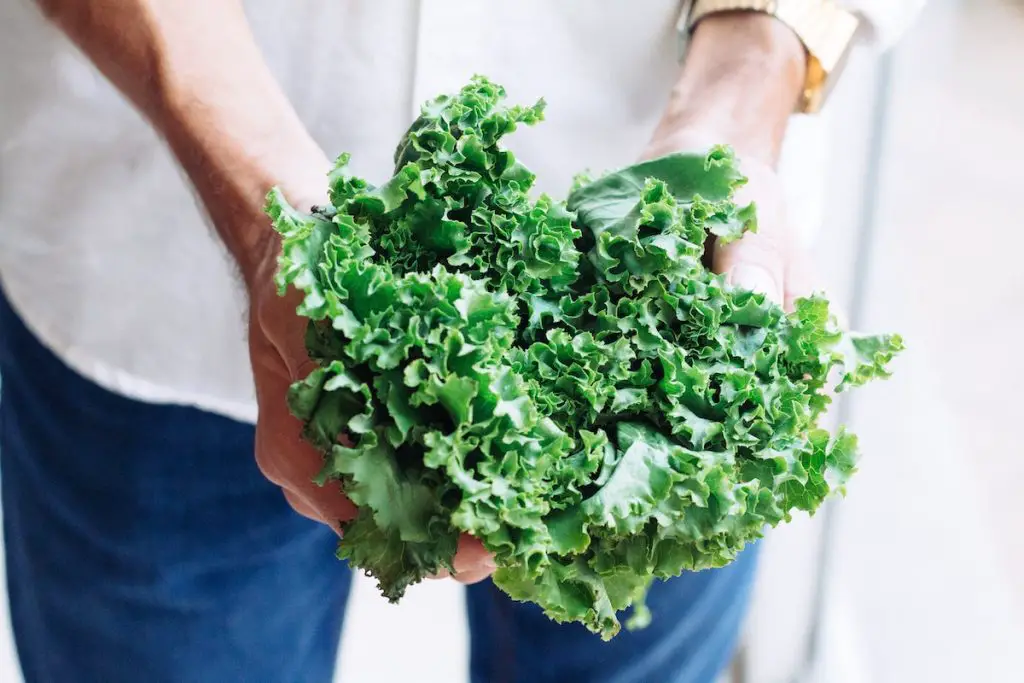
Newsletter Subscribe
Enter your email address below and subscribe to our newsletter

Enter your email address below and subscribe to our newsletter

As a chef with experience working in Michelin-starred restaurants, I know kale’s versatility and health benefits. While it’s a wonderful ingredient, it’s always good to have a few substitutes for kale up your sleeve.
In this guide, I’ll share some of my favorite alternatives to kale and creative ways to use them in your cooking. Let’s explore new flavors and textures together!

Kale is a leafy green vegetable that belongs to the brassica family and shares its high nutrient content with other members such as broccoli and cauliflower.
Kale can be eaten raw or cooked, but eating raw kale will require more chewing. There are three primary types of kale: Curly Green Kale, Curly Purple Kale, and Tuscan Kale, also known as Cavolo Nero, Lacitano Kale, or Dinosaur Kale.
Kale is a versatile and nutrient-rich leafy green popular in salads, smoothies, and dishes like sautéed kale. While it has a slightly bitter taste, it can also be sweet, depending on how you prepare it.
Mayo Clinic describes Kale as a “nutrition superstar” due to the amounts of vitamins A, K, B6, and C, calcium, potassium, copper, and manganese it contains.
Other green vegetables make great substitutes for kale since they are all packed with essential vitamins and minerals like iron and calcium.
Collard greens, mustard greens, spinach, turnip greens, Swiss chard, arugula, and romaine lettuce are all excellent options to consider as substitutes for kale.
They can provide the same nutritional benefits while offering a variety of flavors and textures to choose from.
Collard greens are a good substitute for kale due to their similar flavor and texture. They are packed with vitamins A, C, and K, as well as many antioxidants that can help fight off disease and keep your body healthy. Collard greens can be cooked in a variety of dishes such as soups, stews, and stir-fries.
Swiss chard is an excellent substitute for kale. It has a slightly sweet flavor and can be steamed, sautéed, or added to soups and salads. Swiss chard is packed with nutrients like vitamin A, vitamin K, and iron.
Spinach is a great substitute for kale as it has a similar flavor profile and texture. It is packed with vitamins and minerals and can be eaten raw or cooked in salads, soups, casseroles, and more. Spinach also contains less oxalates than kale which makes it easier to digest for some people.
Bok choy is a great substitute for kale. It has a mild flavor and crunchy texture that works well in salads, stir-fries, soups, and stews. It’s also high in vitamins A and C, as well as iron and calcium.
Beet greens are a great substitute for kale. They have a slightly sweet flavor and are loaded with nutrients like fiber, vitamin A, potassium and iron. They can be cooked in a variety of ways such as steamed, sautéed or added to soups and salads.
Mustard greens are a great substitute for kale. They have a slightly spicier flavor and a crunchy texture that’s perfect for salads, stir-fries, and soups. Mustard greens are also high in vitamins A, C, K, and calcium.
Turnip greens are a delicious and nutritious alternative to kale. They have a slightly bitter flavor and can be sautéed, boiled, or steamed. Turnip greens are full of vitamins A, C, and K as well as calcium and iron.
Broccolini is a great substitute for kale as it has a similar texture and flavor. It can be sautéed, steamed, roasted, or added to soups and stews. Broccolini is also high in vitamins A, C, K, calcium, and iron.
Broccoli Rabe is an excellent substitute for kale. It has a slightly bitter and nutty flavor and can be cooked in a variety of ways. It’s high in vitamins A, C, and K, as well as fiber and calcium. Try using it in salads, soups or stir-fries to get the most out of this tasty vegetable.
Dandelion greens are a great substitute for kale, as they have a similar flavor profile and texture. They can be cooked in the same way as kale, including sautéing, steaming, and adding to soups and salads. Dandelion greens are also rich in vitamins A and C.
Yes, you can replace kale with spinach in most recipes, as they are both leafy greens with similar textures and flavors.
Yes, you can replace kale with lettuce, but keep in mind that lettuce has a milder flavor and a less firm texture than kale so the overall dish may be different.
In soups, you can substitute kale with other leafy greens such as spinach, chard, collard greens, or mustard greens. You can also use cabbage or bok choy for a slightly different flavor and texture.
If you don’t have baby kale, you can substitute it with baby spinach or arugula, which have similar tender leaves and mild flavors. Baby Swiss chard or beet greens can also be good substitutes.
In conclusion, kale is a nutritious and versatile leafy green that can be used in various dishes. However, if you’re looking to switch up your meals or experiment with new ingredients, there are several other leafy greens that can be substituted for kale.
From spinach to collard greens, the options are plentiful. Plus, the health benefits of these alternatives provide an extra boost! So don’t hesitate to try out these substitutes for kale in your next meal.